Google’s Nearby Share or Quick Share app has now officially been released for the Windows operating system. In this post, we will look at its key features and learn how to use Google’s Quick Share app on a Windows 11/10 PC.
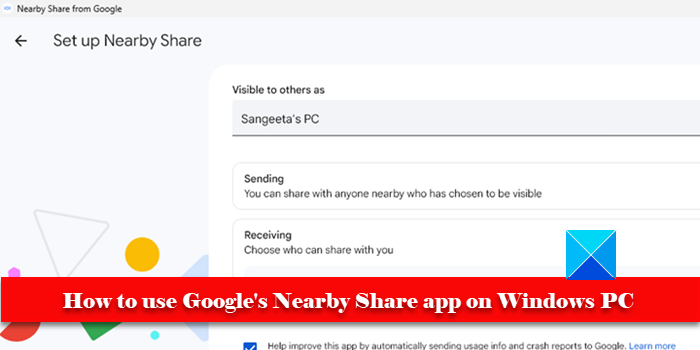
Quick Share, earlier called Nearby Share, was initially featured in Android phones to wirelessly transfer data. Later, Google expanded the feature to the Windows operating system to transfer files between a Windows PC and an Android device (phone, tablet, or Chromebook).
Quick Share allows you to share files, including photos, videos, documents, and even an entire folder over Wi-Fi and Bluetooth networks. The files can be sent or received when the two devices are close to each other within 16 feet (5m). You can also control who can discover your device or confirm a transfer before receiving a file from other users. The files are protected by end-to-end encryption during the transfer.
How to use Google’s Quick Share or Nearby Share app on Windows PC
Google’s Quick Share is natively available in Android (devices running Android 6.0 Marshmallow and above), so you only need to install the Windows version to start sharing files with people around you. The app is compatible with systems running 64-bit Windows (Windows 11/10 only). It is currently not supported by 32-bit operating systems and systems powered by ARM processors.
Note: Google’s Quick Share transfers files between an Android device and a Windows PC. If you want to share files between two Windows PCs, use the Windows’ Nearby Sharing feature.
To use Google’s Quick Share app on Windows PC (desktop or laptop), you need to follow these steps:
- Download and install Google’s Quick Share app for Windows.
- Set Device Visibility preferences.
- Share the files.
Let us go through these steps in detail.
1] Download and install Google’s Quick Share app for Windows
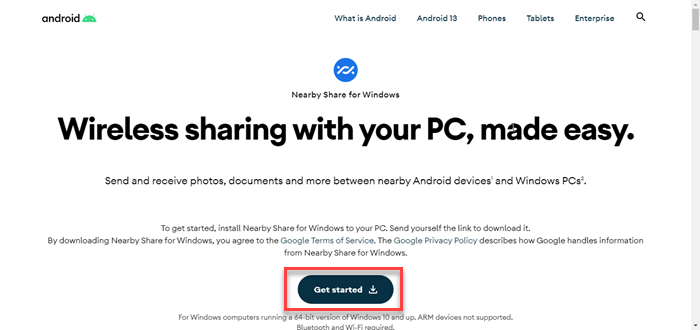
Visit www.android.com and click on the Get started button. A setup file will download on your PC. Double-click on the file to run the setup. Click Yes in the User Account Control prompt. Allow the setup to download required files and install Google’s Quick Share on your PC.
2] Set up Quick Share
After a successful installation, the app will launch. You’ll be prompted to sign in using a Google account. This basically allows the app to customize your sharing preferences by only allowing your Google contacts to share with you. You can choose to use the app with or without a Google account.
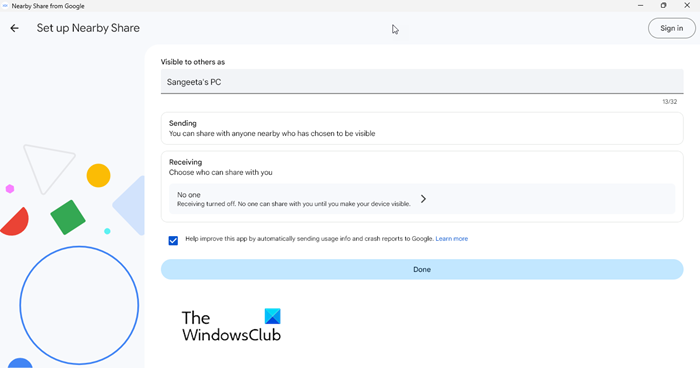
Next, you’ll see the Set up Quick Share screen. The screen has 3 setting options:
Visible to others as: Your Windows PC will appear on nearby devices for connection with this name.
Sending: You can send files to nearby devices that have chosen to be visible.
Receiving: You can choose who can discover your device (or share files with you). It has 4 options: Everyone, Contacts, Your devices, No one.
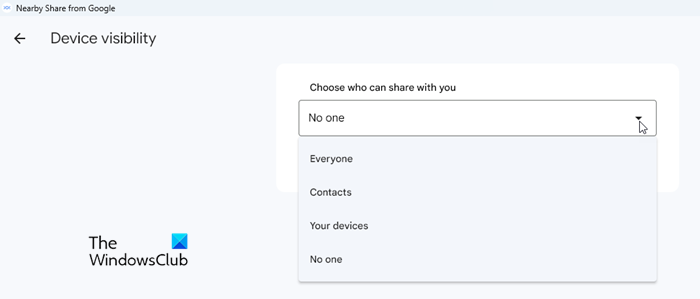
- Everyone: This option works either temporarily or all the time. If you choose to keep everyone mode all the time, anyone can share files with you when they’re nearby. But if you choose to keep everyone mode temporarily, no one can share with you after a few minutes. In both cases, the sharing happens only after you approve the connection request.
- Contacts: This option requires you to sign-in using a Google account. After signing-in, a list of your Google contacts will appear and you can choose who can share with you when they’re nearby. By default, your device is visible to all contacts. To choose selected contacts, turn off the ‘visible to all contacts’ toggle. Individual toggles will appear next to each name. Use these toggles to select/deselect the contacts.
- Your Devices: This option also requires you to sign-in using a Google account. Choose this option to share with your own devices (devices that are signed in to the same Google account can share files with each other). Sharing to your own devices doesn’t require a connection approval.
- No one: This option turns off the receiving feature. If you choose this option, no one can share with you until you make your device discoverable (by choosing any of the other 3 options).
After setting up Quick Share, click on the Done button.
An animated geometric logo will appear on the app’s interface, indicating that the app is ready to send or receive files.
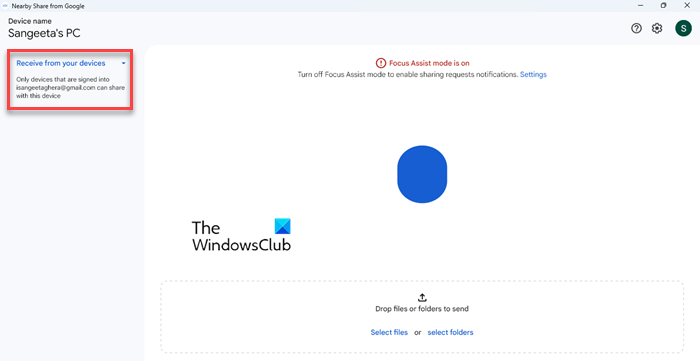
Note: By default, Google’s Quick Share uses Windows Focus assist mode to disable sharing request notifications. You may turn off the feature to start receiving notifications.
3] Share the files
After setting up Google’s Quick Share app for Windows, you can start sending or receiving files. Let us see how this can be done using an example.
Note: Google’s Quick Share app requires Wi-Fi, Bluetooth, and Location services for pairing. Both devices must also be in the unlocked state at the time of initiating the transfer. You also need to enable Nearby Share on your Android phone before you begin the file transfer.
A] Receive file from Phone to PC
Say you want to share an image file from your Android phone to your Windows 11 PC. Turn on Wi-Fi, Bluetooth, and enable Location feature on both devices. Then select ‘Your devices’ under ‘Receiving’ in the Nearby Share (for Windows) app settings. This will make your Windows PC discoverable to your Android phone.
Then go to your smartphone, open the image in the Gallery app, and tap the Share icon. You will see a Nearby/Quick Share button next to the ‘Share files via’ option. Click on it.
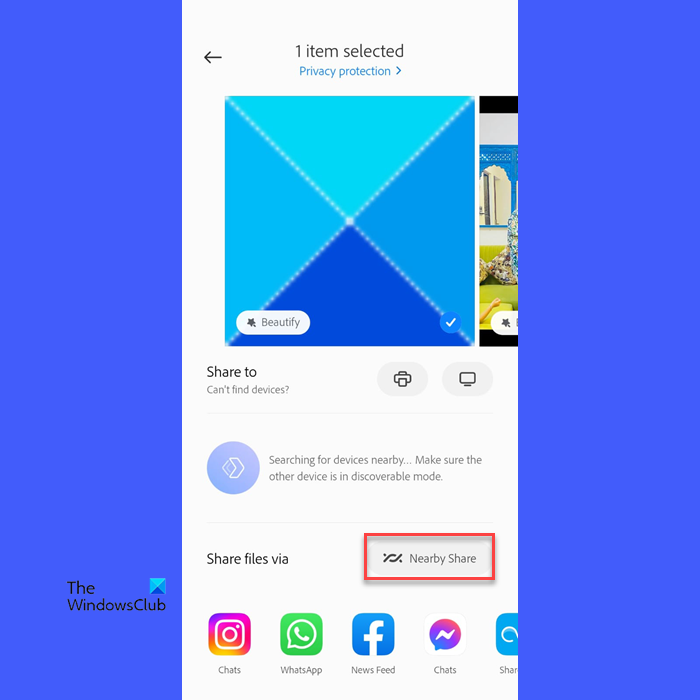
You’ll be prompted to Turn On Quick/Nearby Share. Tap on the Profile picture icon next to your Device name. Choose the same Google account with which you are signed in to Quick Share on your Windows PC. Then tap on the Settings (gear) icon next to the Device visibility option. Choose Your devices from the available options and click on the Done button. Finally, click on the Turn on button.
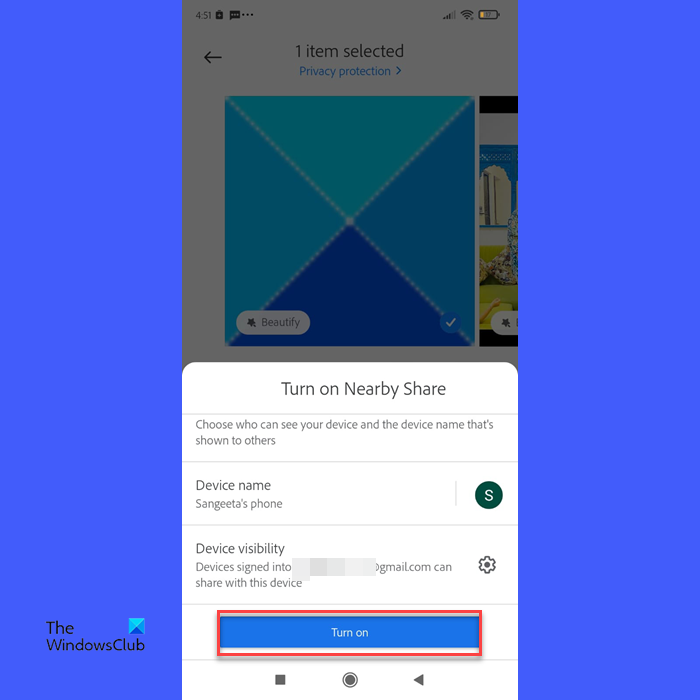
Note: You can also enable Quick Share via the Files by Google app. The app comes pre-installed on most Android devices, but if it is not available on your phone, you may download and install it from the Google Play Store. The app has integrated Quick Share settings that let you easily turn on or off the feature.
Within a few seconds, your phone will discover your PC and show its name in the Quick Share popup. Click on your PC’s name to send a connection request.
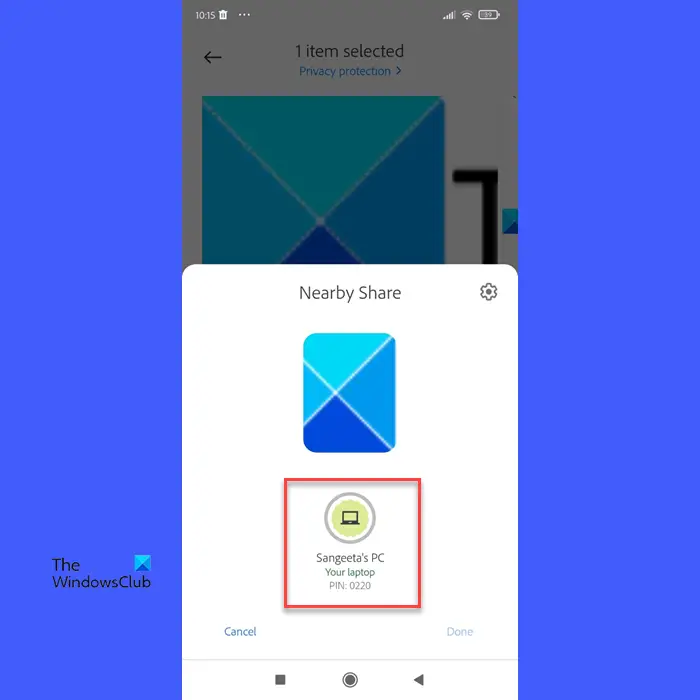
Now go back to your PC and click on the Accept button to approve the connection request and begin the file transfer (this will happen once after enabling Quick Share).

Soon, the file will be transferred to your Windows PC. You may view the file by clicking the Open button or by visiting the Downloads folder on your PC.

Note: If you’ve multiple devices nearby, they will show up in the Nearby Share popup in Android. You can select multiple devices at once and send files simultaneously.
B] Send file from PC to Phone
You can also send files from your PC to your Android phone. There are three different ways to select the files in the Quick Share app for Windows – via drag-n-drop, via the File Explorer, or via the ‘Send with Quick Share’ option that appears in the right-click menu of the file.
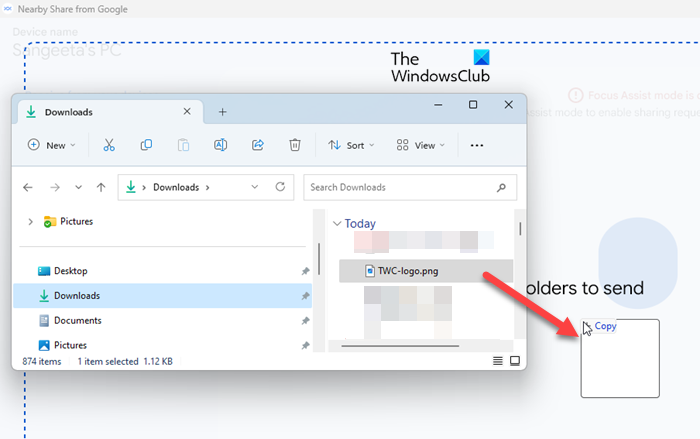
Once you select files, they’ll appear in the left panel of the app’s Window. The app will soon detect your phone and show its name. Click on it to start sharing the file.
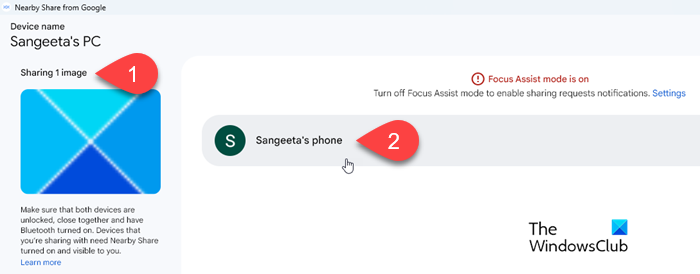
Quick Share will start sending the file. You will see a notification when the file is sent successfully.
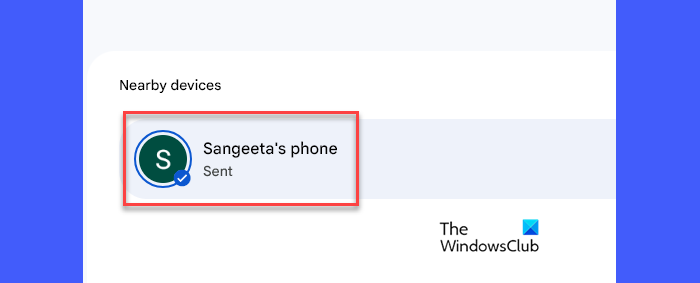
A similar notification will also appear on your phone. Once the file is received, you can click the Open button to view the file.
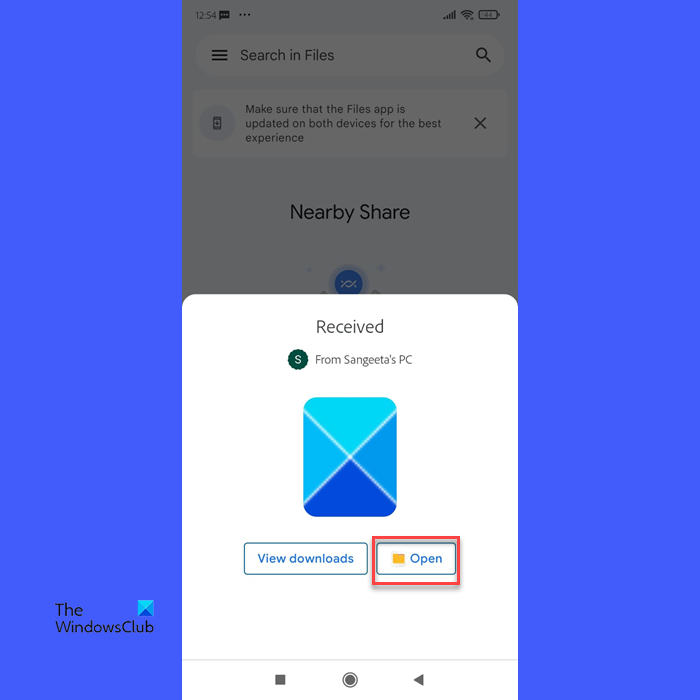
Likewise, you can send and receive as many files as you want via the Google Quick Share app for Windows. If you face any difficulty using the app, do let us know in the comments section below.
Also read: Share or Transfer files between User Accounts on Windows.
Does Google Quick Share work with Windows?
Users of Windows 11 and Windows 10 (64-bit only, not powered by ARM processors) can use Google’s Quick Share app to share files between a PC and Android devices. The app is officially available for download and has already been installed by more than 1.7 million users worldwide.
Why does Quick Share not work on PC?
If Google Quick Share is not working on your Windows PC, make sure you have a compatible Windows version (Windows 11/10) and have the location, Bluetooth, and Wi-Fi features enabled on both devices. Also, make sure none of the devices are locked before making a pairing request.
Read next: Transfer Files between Mobile Phone and Windows PC using SHAREit.
Leave a Reply